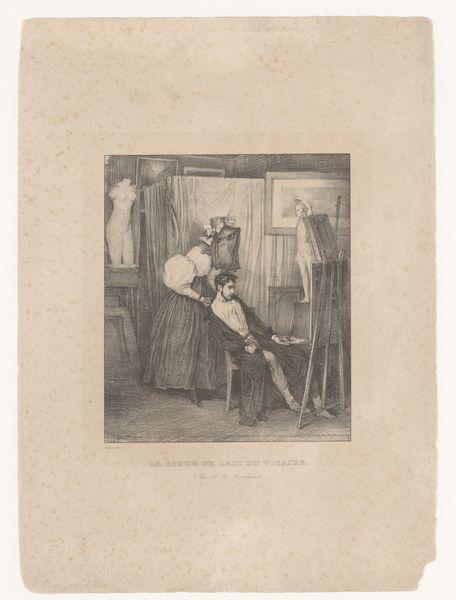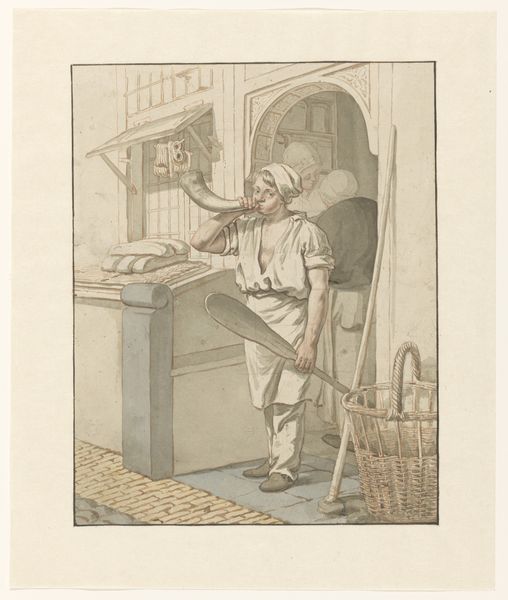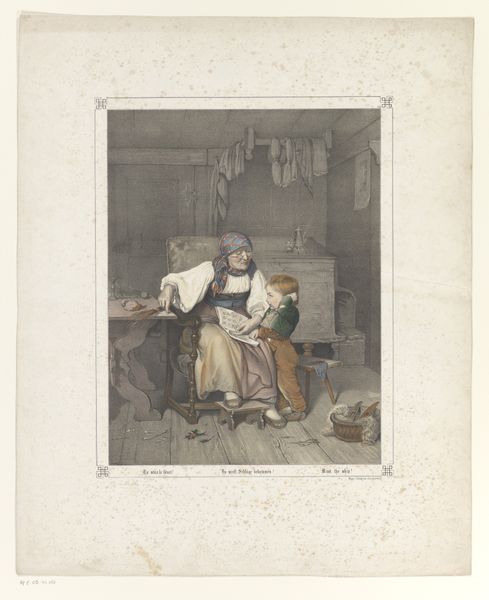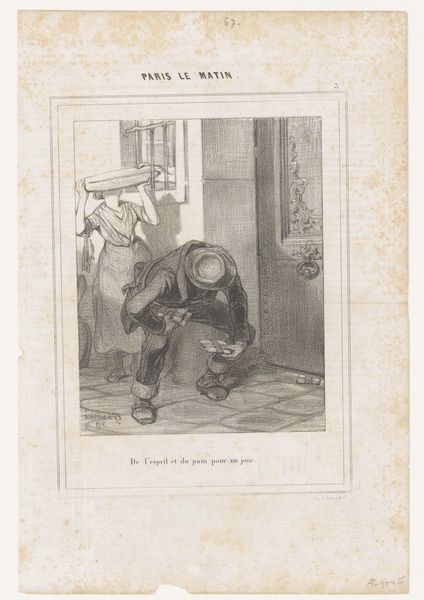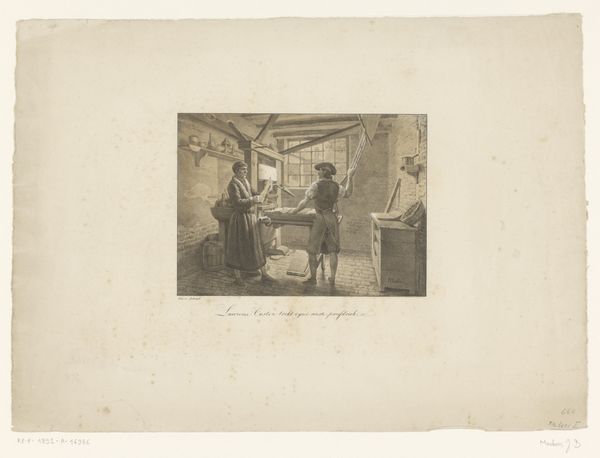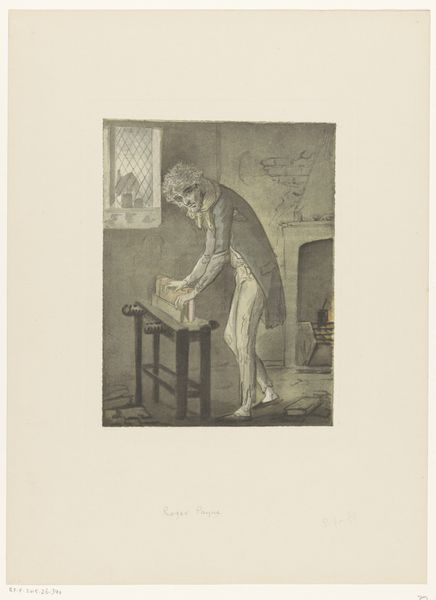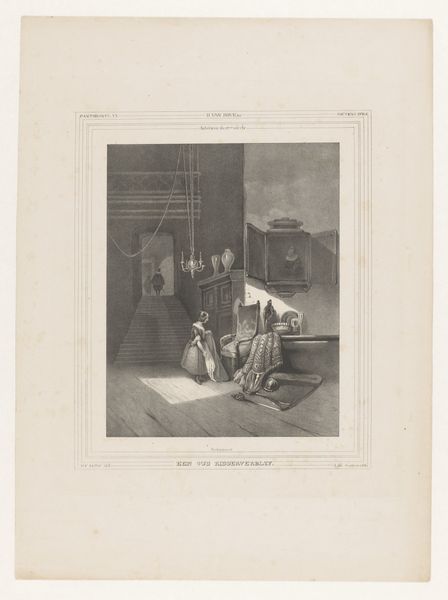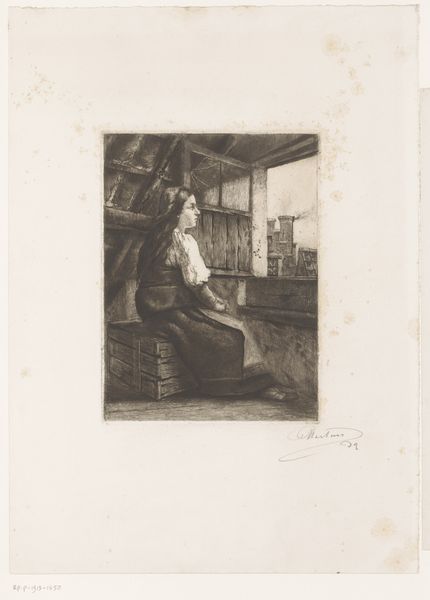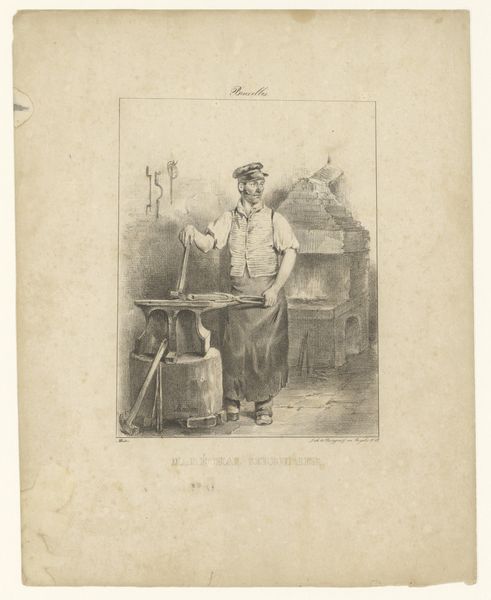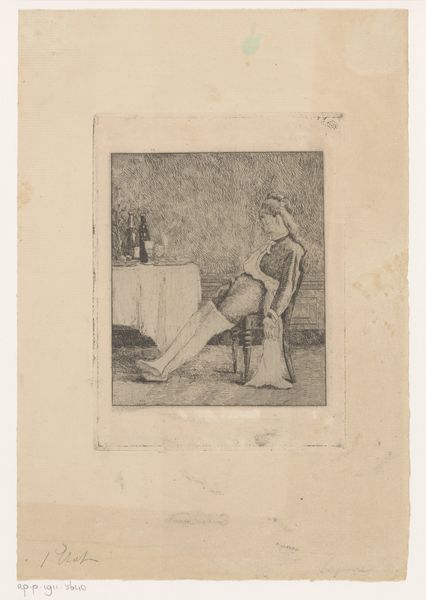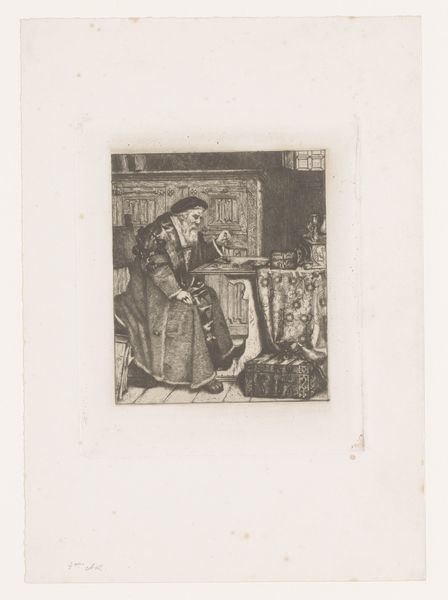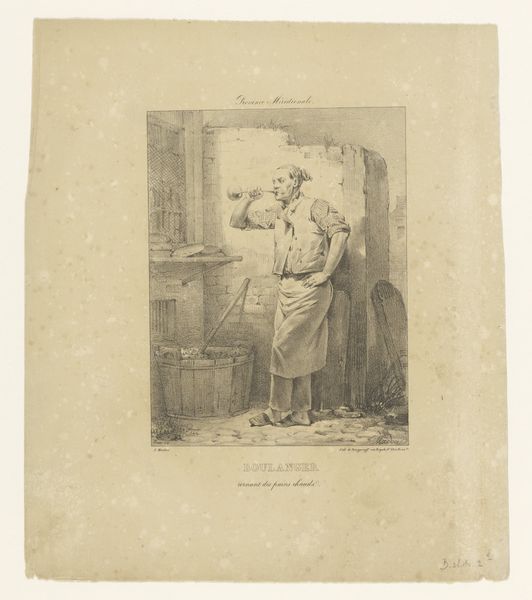
Dimensions: Sheet: 9 13/16 in. × 7 in. (25 × 17.8 cm) Mount: 13 5/8 in. × 11 in. (34.6 × 28 cm)
Copyright: Public Domain
This watercolor, 'Pierrot', was made by Samuel Marie Clédat de Lavigerie in the late 19th century. Here, the artist uses thin washes of pigment on paper. A traditional fine art material, paper has a unique ability to absorb water, allowing for delicate and translucent effects. Lavigerie masterfully employs this quality to create a melancholic mood. Look at how the pale hues create a sense of quiet resignation, while the fluid strokes capture the fabric’s folds. There is also a social dimension to consider. The Pierrot figure was a popular character in French pantomime. Traditionally, this character was a sad clown, often depicted as poor or unlucky in love, suggesting a commentary on the social realities of the time. By focusing on the watercolor and its expressive potential, we can understand this seemingly simple painting as a window into both the artistic practices and social concerns of 19th-century France, collapsing any assumed hierarchy between fine art and the everyday.
Comments
No comments
Be the first to comment and join the conversation on the ultimate creative platform.
